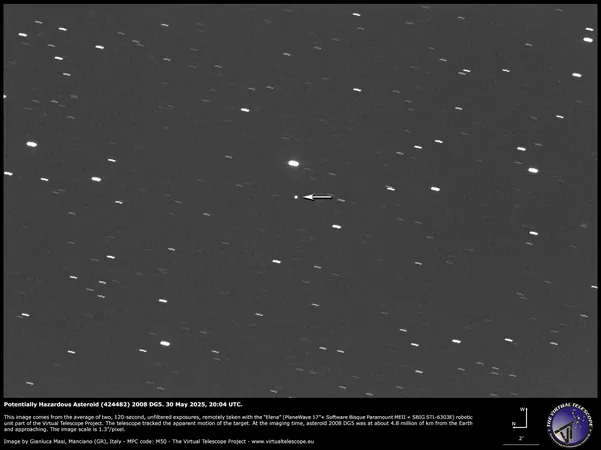
NASA Unveils Shocking Temperature Extremes on the Moon: What This Means for Future Space Exploration!
2025-01-07
Author: Nur
NASA Unveils Shocking Temperature Extremes on the Moon
Prepare to be amazed! NASA's latest revelations about our neighboring lunar body, the Moon, uncover some of the most staggering temperature variations found anywhere in our solar system. During daylight hours, temperatures soar above 100°C (212°F), only to plummet to an astonishing -100°C (-148°F) by nightfall. How is such a dramatic change even possible?
The Culprit Behind the Temperature Swing
The culprit behind this wild temperature swing is the Moon’s lack of atmosphere. Unlike Earth, where our atmosphere serves as a protective buffer, the Moon's surface is exposed directly to the harshness of solar radiation, causing it to absorb intense heat and release it just as rapidly once the sun sets.
Insights from NASA's Research
This enlightening information comes from extensive research by NASA and scientists like John Monnier, an astronomy professor at the University of Michigan. Their studies emphasize the critical role of the Moon's regolith—its surface soil—in the planet's temperature fluctuations. Remarkably, the regolith is a poor heat conductor, which means the surface heats quickly but cools down just as fast, while lower layers remain insulated. Data from the historic Apollo missions revealed that temperatures just beneath the lunar surface were 40 to 45 kelvins warmer than the surface itself, spotlighting the Moon's complex thermal behavior.
Breakthroughs with the Lunar Reconnaissance Orbiter
But that's not all! NASA's Lunar Reconnaissance Orbiter (LRO), launched in 2009, is delivering groundbreaking insights into lunar thermal patterns. Observations made in 2022 found intriguing thermal anomalies, especially within certain pits that maintain a stable temperature of around 17°C (62.6°F). These areas, characterized by consistent warmth, are prime candidates for future human habitats—offering a surprising twist for lunar colonization efforts!
The Cold Polar Regions
The Moon’s polar regions tell yet another captivating story. With the sun's rays striking at such a low angle, permanently shadowed craters—particularly those found at the Moon’s south pole—reach temperatures that are among the coldest in our solar system, hitting a chilling -248.15°C (-414.69°F). These icebound craters could very well hide water ice, a treasure trove of resources essential for sustained human presence during future lunar missions.
Implications for Future Lunar Missions
Grasping the Moon’s extreme temperature dynamics is crucial for engineers and scientists aiming to create robust technology that can withstand these harsh environments. Armed with these insights, they are already developing innovative equipment and strategies that could pave the way for sustainable lunar exploration and habitation.



 Brasil (PT)
Brasil (PT)
 Canada (EN)
Canada (EN)
 Chile (ES)
Chile (ES)
 Česko (CS)
Česko (CS)
 대한민국 (KO)
대한민국 (KO)
 España (ES)
España (ES)
 France (FR)
France (FR)
 Hong Kong (EN)
Hong Kong (EN)
 Italia (IT)
Italia (IT)
 日本 (JA)
日本 (JA)
 Magyarország (HU)
Magyarország (HU)
 Norge (NO)
Norge (NO)
 Polska (PL)
Polska (PL)
 Schweiz (DE)
Schweiz (DE)
 Singapore (EN)
Singapore (EN)
 Sverige (SV)
Sverige (SV)
 Suomi (FI)
Suomi (FI)
 Türkiye (TR)
Türkiye (TR)
 الإمارات العربية المتحدة (AR)
الإمارات العربية المتحدة (AR)